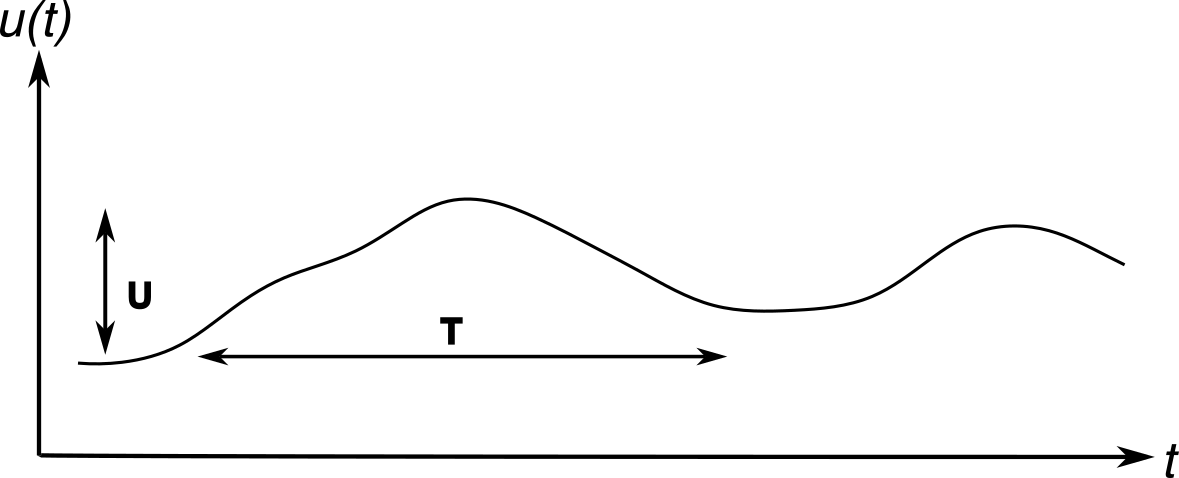Estimates of the truncation error
Estimates of the truncation error#
To obtain an estimate of the truncation error, we must first estimate the magnitude of the derivatives \(du/dt\), \(d^2u/dt^2\), \(d^3u/dt^3\), and so on.
Let us consider a signal \(u(t)\) such as the following:

Fig. 1 Time and space scales of signal \(u(t)\).#
We observe that over time interval \(T\) the signal shows a variation of size \(U\). These characteristic values may be thought of as the time scale and the magnitude of the variation of \(u\) over \(T\), respectively.
Since the derivative of \(u(t)\) is the variation \(\Delta u\) that occurs over time interval \(\Delta t\), we can say that \(U\) and \(T\) are characteristic values of \(\Delta u\) and \(\Delta t\) and write
To obtain an estimate of the second derivative, we may assume that the variations in \(du/dt\) also occur over the same time scale \(T\), as the signal \(u\), and write
For higher order derivatives, the reasoning is the same.
To estimate the magnitude of the truncation error, we can write that the size of the terms of (6) will be
For small \(\Delta t\), we can retain the leading order error term in (10) and write:
Now we see that the order of the relative error \(\varepsilon\), i.e. the difference between the exact derivative and the approximation divided by the magnitude of the derivative, is
This implies that to have an acceptable approximation to the derivative \(du/dt\), we should have \(O(\varepsilon)\ll 1\), which implies that
This condition carries over easily to spatial derivatives, where the equivalent condition is \(\Delta x \ll L\), where \(L\) is the characteristic length, or length scale of the signal.